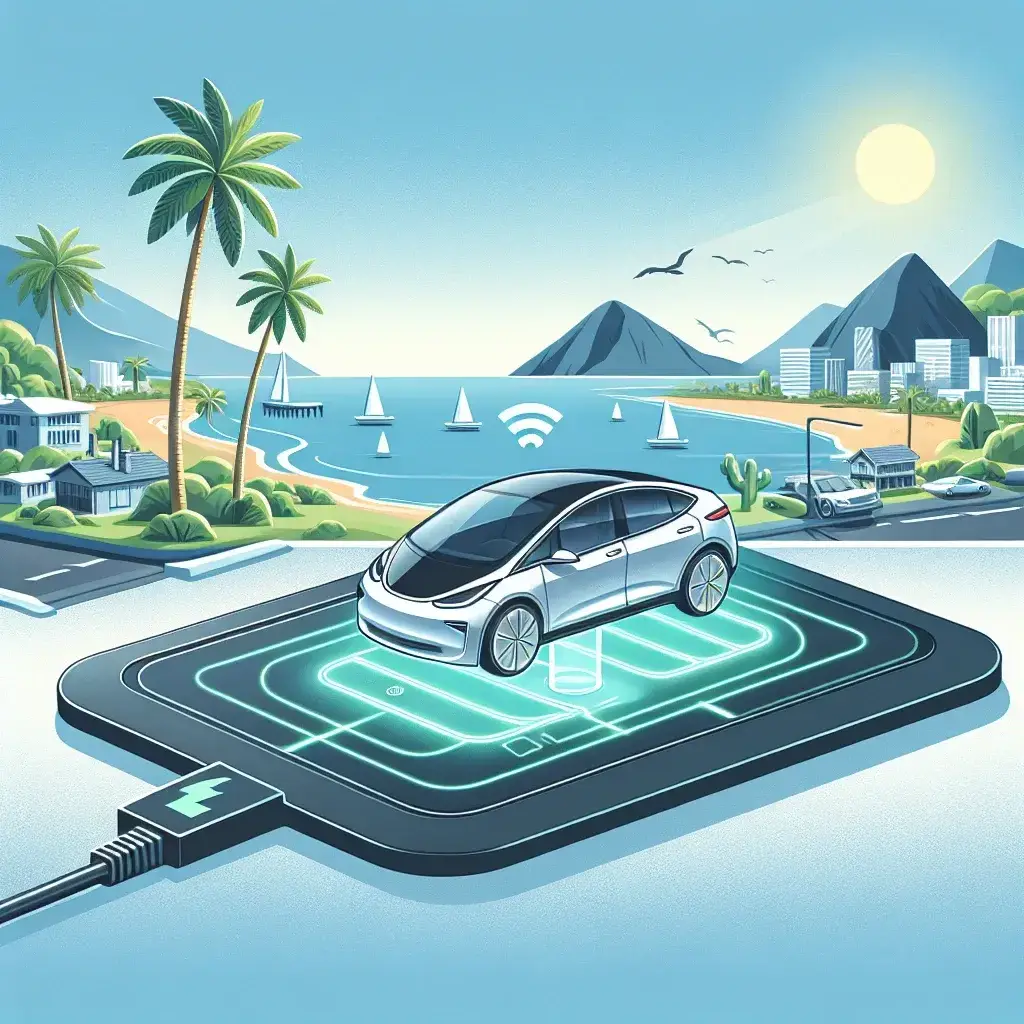Introduction
As the world increasingly shifts towards sustainable energy solutions, electric vehicles (EVs) have emerged as a viable alternative to traditional gasoline-powered cars. Among the forefront of this revolution is Tesla, a company renowned for its innovative technologies and commitment to sustainable transportation. Recently, Tesla has commenced a pilot program for wireless EV charging pads in California, which promises to make charging electric vehicles more convenient and efficient.
The Concept of Wireless EV Charging
Wireless EV charging, also known as inductive charging, utilizes electromagnetic fields to transfer energy between two coils—one located in the charging pad and the other in the vehicle. This technology eliminates the need for physical connectors, allowing for a seamless charging experience. As Tesla spearheads this initiative, it’s essential to understand the implications of wireless charging on the electric vehicle market.
Historical Context
Wireless charging is not a new concept. It has seen applications in consumer electronics for years, such as smartphones and smartwatches. However, scaling this technology for electric vehicles has presented unique challenges. Tesla’s pilot program in California marks a significant step in overcoming these hurdles, with a focus on enhancing charging infrastructure for EV owners.
How Tesla’s Wireless Charging Pads Work
The wireless charging pads developed by Tesla use resonant inductive coupling to transfer energy. Here’s a simplified explanation of how it works:
- Charging Pad Installation: Charging pads will be installed in designated parking spots.
- Vehicle Alignment: Cars equipped with Tesla’s wireless charging technology will align over the pad.
- Energy Transfer: The charging pad generates a magnetic field that induces an electric current in the vehicle’s receiver coil.
- Charging Efficiency: The system aims to achieve charging efficiencies comparable to traditional wired methods.
Advantages of Wireless Charging
Convenience
One of the most significant benefits of wireless charging is convenience. Drivers will no longer have to fumble with charging cables or worry about plugging in their vehicles. Simply parking over a charging pad will initiate the charging process.
Enhanced Safety
Wireless charging reduces the risk of electrical hazards associated with traditional charging methods. With no exposed wires or connectors, the likelihood of accidents decreases significantly, making it a safer option for EV owners.
Reduced Wear and Tear
Physical connectors can wear out over time, leading to maintenance issues. Wireless charging eliminates this concern, as there are no moving parts that can deteriorate with use.
Challenges Ahead
Cost
Implementing wireless charging infrastructure involves significant investment. The cost of manufacturing and installing charging pads may be higher compared to traditional charging stations, which could affect the overall adoption rate.
Charging Speed
While the technology is promising, the charging speed of wireless pads may not be on par with traditional fast chargers. Addressing this issue will be crucial for widespread acceptance among EV users.
Future Implications
The success of Tesla’s wireless EV charging pads in California could pave the way for broader adoption of this technology across the globe. As the pilot program progresses, it may influence city planning and infrastructure development, integrating wireless charging into urban environments.
Predictions for Market Impact
If successful, this initiative could influence other manufacturers to invest in wireless charging technology, potentially transforming the landscape of the electric vehicle market. The reduction in charging times and enhanced convenience may accelerate EV adoption rates, aiding the transition to sustainable transportation.
Real-World Applications
The implications of wireless charging extend beyond individual vehicle owners. Imagine public transportation systems like buses and taxis equipped with this technology, able to charge while waiting at stops. Moreover, businesses could install wireless charging pads in their parking lots, offering added convenience to customers and attracting more EV owners.
Cultural Relevance
As electric vehicles become a cultural symbol of environmental consciousness, the introduction of wireless charging pads aligns perfectly with the values of sustainability and innovation. Tesla’s initiative reflects a growing awareness of the need for convenient, eco-friendly solutions that cater to modern lifestyles.
Expert Opinions
Industry experts have expressed optimism regarding Tesla’s pilot program. According to Dr. Jane Smith, an automotive technology analyst, “Tesla’s wireless charging initiative could be a game-changer in the EV market. It addresses the common pain points of EV owners and aligns well with the broader goals of sustainability. However, it will be vital to monitor the pilot’s outcomes closely to understand its long-term viability.”
Conclusion
In conclusion, Tesla’s pilot program for wireless EV charging pads in California represents a significant advancement in electric vehicle technology. While challenges remain, the potential benefits of convenience, safety, and reduced wear and tear present a compelling case for the integration of wireless charging into our daily lives. As we look to the future, the success of this initiative could redefine the way we think about charging electric vehicles, moving us closer to a sustainable and efficient transportation system.

